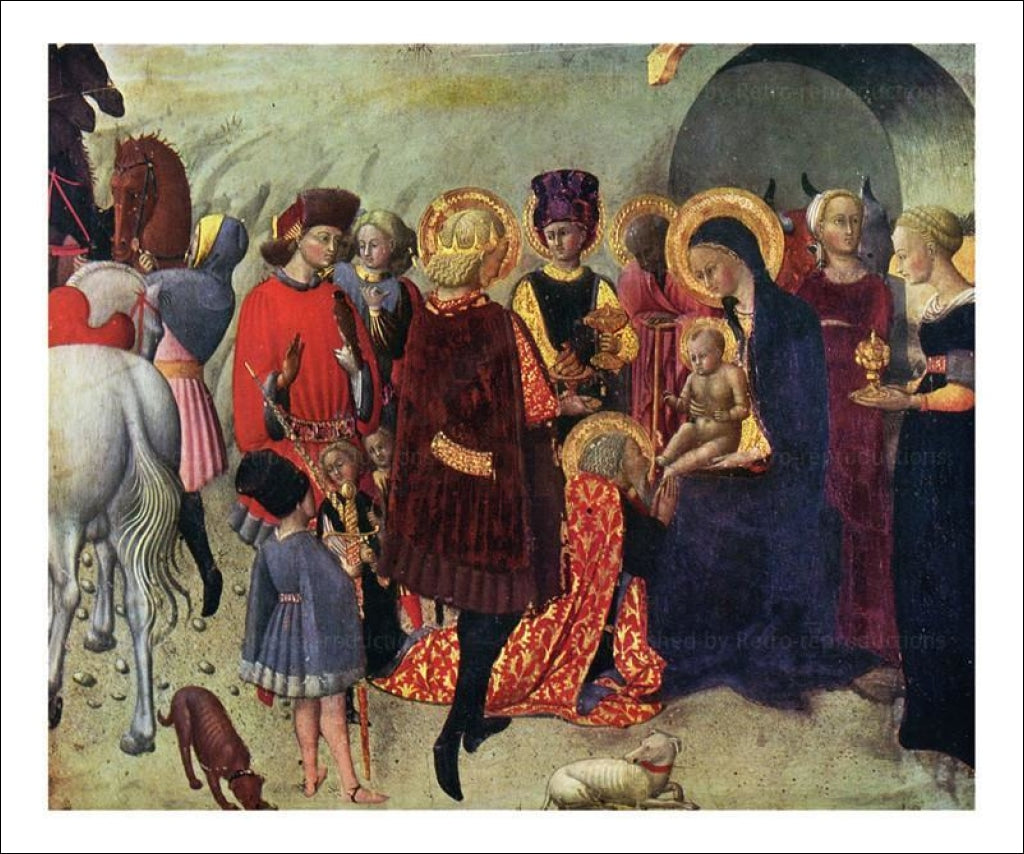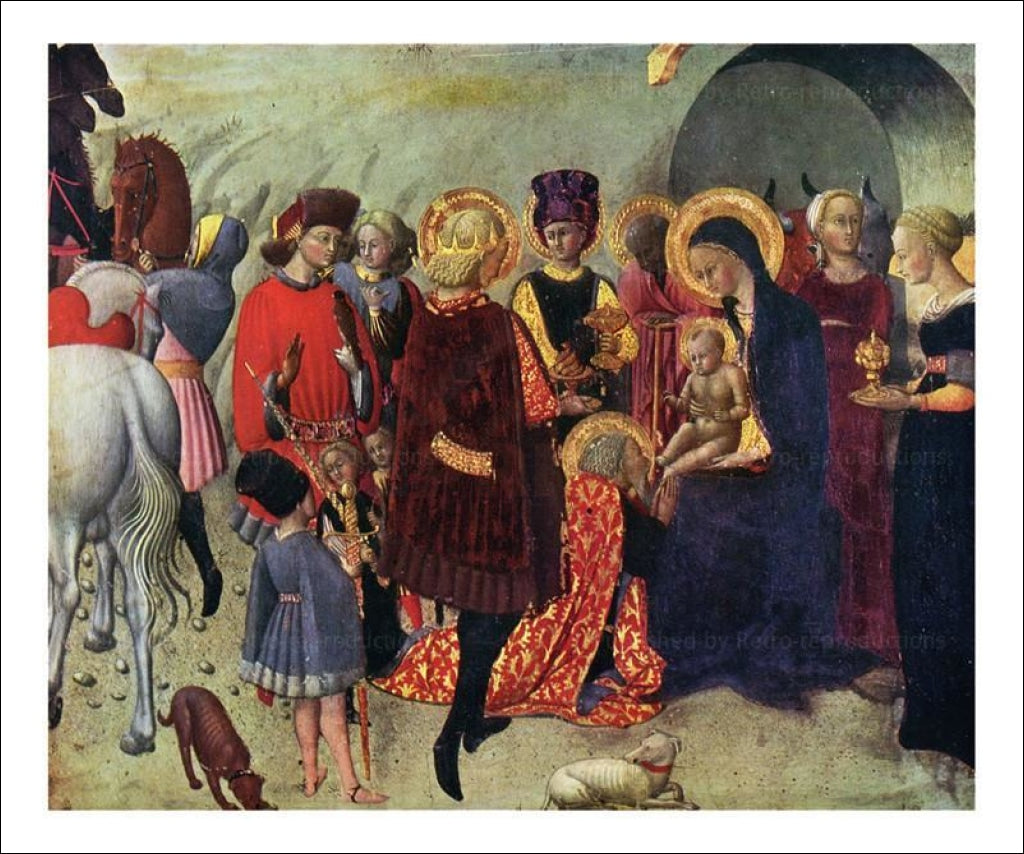1
/
of
1
Adoration of the Magicians, Stefano di Giovanni
Adoration of the Magicians, Stefano di Giovanni
Regular price
$39.00 USD
Regular price
Sale price
$39.00 USD
Unit price
/
per
Shipping calculated at checkout.
Couldn't load pickup availability
Share
Sassetta, original name Stefano di Giovanni (died c. 1450, Siena [Italy]), Gothic-style painter considered to be the greatest Sienese painter of the early 15th century.
The date and place of his birth are uncertain. He seems to have been trained in Siena, and the force of the Sienese tradition is evident in the vivid colours and elegant use of line in the surviving panels of his first commissioned work, an altarpiece for the Arte della Lana in Siena (1423–26). His interest in the work of the first generation of Florentine Renaissance painters is reflected in the coherent spatial relationships of the monumental altarpiece of the “Madonna of the Snow,” painted for Siena Cathedral in 1430–32. From this point on, under Gothic influence, Sassetta’s style assumes an increasingly decorative character, manifest initially in a polyptych in San Domenico at Cortona (probably 1437) and reaching its climax in a cycle of scenes from the legend of St. Anthony the Abbot. His best-known and most ambitious work was carried out for San Francesco at Sansepolcro (1437–44) and was originally a double-sided altarpiece (now dispersed) with a Virgin and Child and four saints on the front and scenes from the life of St. Francis on the reverse side. The St. Francis scenes mark the peak of Sassetta’s career as a narrative artist and are exemplary of his late style, with their sophisticated colour sense and their subtle, rhythmic compositions. Sassetta never completely abandoned his interest in Florentine painting, and it is thought to be the fusion of traditional and contemporary elements in his work that turned Sienese painting from the Gothic to the Renaissance style.
View full details
The date and place of his birth are uncertain. He seems to have been trained in Siena, and the force of the Sienese tradition is evident in the vivid colours and elegant use of line in the surviving panels of his first commissioned work, an altarpiece for the Arte della Lana in Siena (1423–26). His interest in the work of the first generation of Florentine Renaissance painters is reflected in the coherent spatial relationships of the monumental altarpiece of the “Madonna of the Snow,” painted for Siena Cathedral in 1430–32. From this point on, under Gothic influence, Sassetta’s style assumes an increasingly decorative character, manifest initially in a polyptych in San Domenico at Cortona (probably 1437) and reaching its climax in a cycle of scenes from the legend of St. Anthony the Abbot. His best-known and most ambitious work was carried out for San Francesco at Sansepolcro (1437–44) and was originally a double-sided altarpiece (now dispersed) with a Virgin and Child and four saints on the front and scenes from the life of St. Francis on the reverse side. The St. Francis scenes mark the peak of Sassetta’s career as a narrative artist and are exemplary of his late style, with their sophisticated colour sense and their subtle, rhythmic compositions. Sassetta never completely abandoned his interest in Florentine painting, and it is thought to be the fusion of traditional and contemporary elements in his work that turned Sienese painting from the Gothic to the Renaissance style.

-
High Quality Reprints
Every piece of art is printed using premium materials. We carefully package and deliver your order to your door.
-
Wholesale Orders
We welcome wholesale inquiries on some of our products. Click here to learn more about our offering.
Sign Up for Our Newsletter
Get a sneak peek on upcoming promos and get 10% off your first order.

